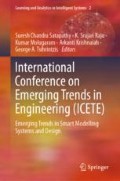Abstract
Self-heating of coal promotes spontaneous combustion during mining, transportation, storage, handling and milling processes leading to risk of fires and consequent loss of calorific value of fuel. Adiabatic oxidation method was adopted in this investigation whereby spontaneous heating potential was measured according to total temperature rise (TTR) of coal sample versus time. Aim of this study was to investigate correlation of intrinsic properties of coal and its propensity for spontaneous combustion. Tests were conducted on 14 coal samples at an initial temperature of 40 ℃ to mimic typical conditions in coal storage and handling plant. A correlation of the TTR values with the proximate and ultimate analyses of the coal samples has been obtained.
Access this chapter
Tax calculation will be finalised at checkout
Purchases are for personal use only
References
Sloss L (2015) Assessing and managing spontaneous combustion of coal. IEA Report CCC/259
Arisoy A, Beamish B (2015) Reaction kinetics of coal oxidation at low temperatures. Fuel 159:412–417
Singh RVK (2013) Spontaneous heating and fire in coal mines. In: The 9th Asia-Oceania symposium on fire science and technology, procedia engineering, vol 62, pp 78–90
Zutshi A, Ray SK, Bhowmick BC (2001) Indian coal vis-à-vis spontaneous heating problems. J Mines Met Fuels 44:123–128
Mohalik NK, Lester E, Lowndes IS (2016) Review of experimental methods to determine spontaneous combustion susceptibility of coal – Indian context. Int J Min Reclam Environ 31:301–332
Beamish BB, Theiler J (2017) Recognising the deficiencies of current spontaneous combustion propensity index parameters. In: The Australian mine ventilation conference, Brisbane, Qld., pp 113–117
Beamish B, Beamish R (2010) Benchmarking moist coal adiabatic oven testing. In: 10th underground coal operators’ conference. University of Wollongong & The Australasian Institute of Mining and Metallurgy, pp 264–268
Ren TX, Edwards JS, Clarke D (1999) Adiabatic oxidation study on the propensity of pulverized coals to spontaneous combustion. Fuel 78:1611–1620
Rambha RV, Ren TX (2018) Study of the susceptibility of coal for spontaneous combustion using adiabatic oxidation method. Chem Eng Trans 65:271–276
Bhat S, Agarwal PK (1996) The effect of moisture condensation on the spontaneous combustibility of coal. Fuel 75:1523–1532
Onifade M, Genc B (2018) Prediction of the Spontaneous Combustion liability of coals and coal shales using statistical analysis. J South African Inst Min Metall 118:800–808
Acknowledgments
The author acknowledges the European Coal and Steel Community (ECSC) for its financial support of this study. Thanks are due to University of Nottingham, UK Coal, PowerGen Plc, and TXU Europe for their support and generosity in providing useful discussions and information.
Author information
Authors and Affiliations
Corresponding author
Editor information
Editors and Affiliations
Rights and permissions
Copyright information
© 2020 Springer Nature Switzerland AG
About this paper
Cite this paper
Rambha, R.V. (2020). Spontaneous Combustion of Coal and Correlation with Its Intrinsic Properties Using Adiabatic Oxidation Method. In: Satapathy, S., Raju, K., Molugaram, K., Krishnaiah, A., Tsihrintzis, G. (eds) International Conference on Emerging Trends in Engineering (ICETE). Learning and Analytics in Intelligent Systems, vol 2. Springer, Cham. https://doi.org/10.1007/978-3-030-24314-2_35
Download citation
DOI: https://doi.org/10.1007/978-3-030-24314-2_35
Published:
Publisher Name: Springer, Cham
Print ISBN: 978-3-030-24313-5
Online ISBN: 978-3-030-24314-2
eBook Packages: EngineeringEngineering (R0)

